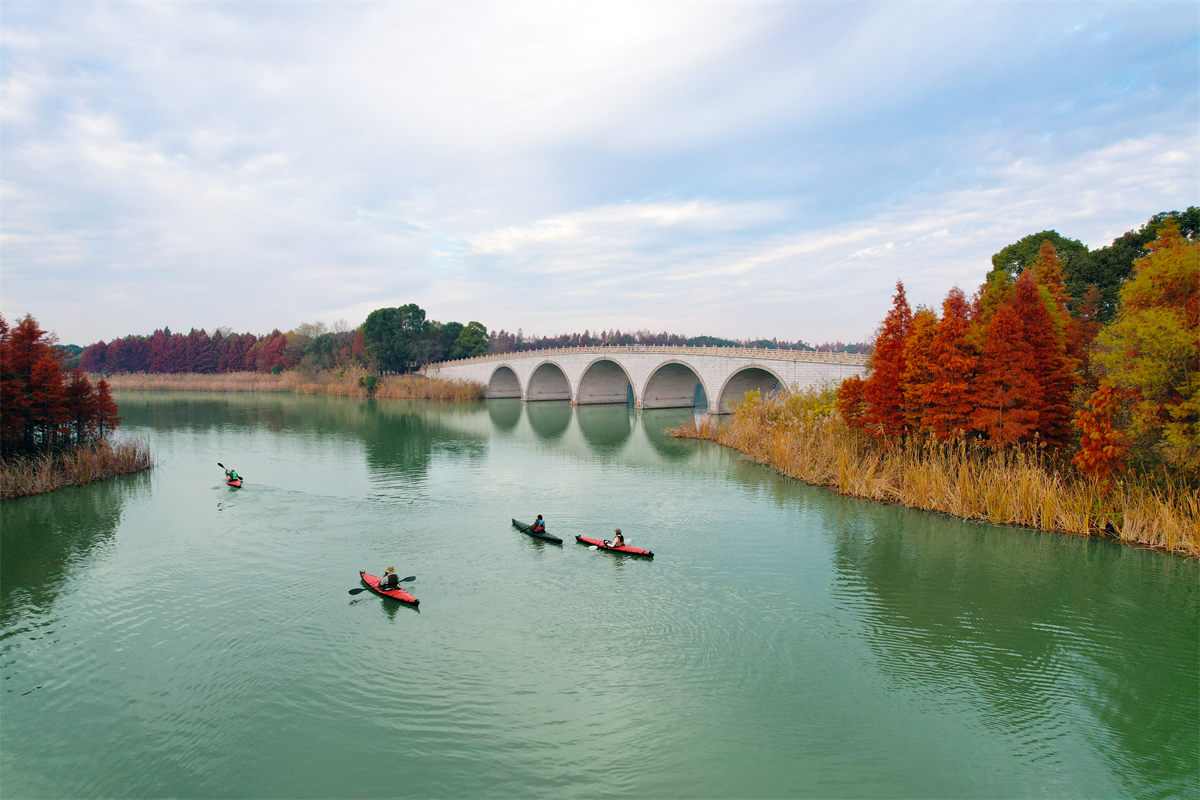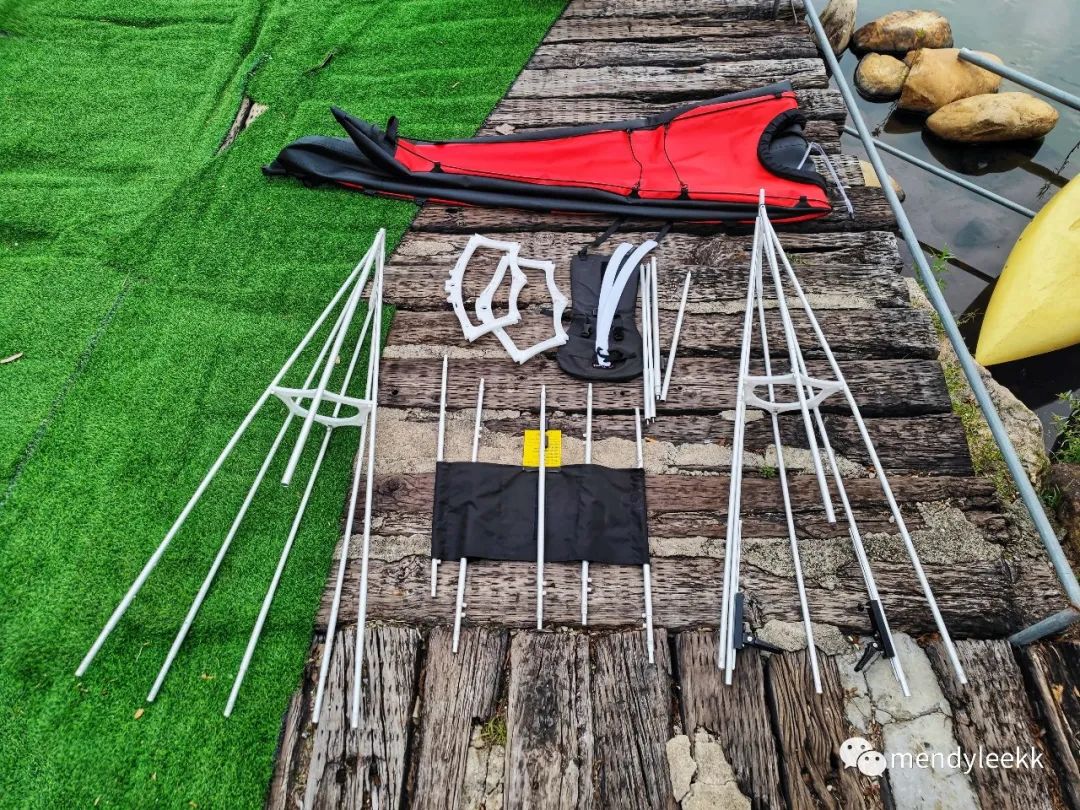- Home
- >
- Rowing techniques
- >
- New
- >
- View Details
Truer Descendants of the Eskimo Kayak(PengYi Yu Folding kayak)
January,3rd,2024
Look up the word kayak in Webster’s Tenth Collegiate Dictionary and you’ll find the following definition:
kay•ak 'ki-'ak n [Inuit qayaq] (1757) 1: an Eskimo canoe made of a frame covered with skins except for a small opening in the center and propelled by a double-bladed paddle 2: a portable boat styled like an Eskimo kayak。
By that definition, folding kayaks are truer descendants of the Eskimo kayak than rigid kayaks. Foldables can make that claim because they adhere more closely to the design and materials principles of the kayaks developed by Northern peoples some 10,000 years ago. This association is far more meaningful than mere nostalgia; the underlying structures that Northern and folding kayaks have in common translate into some unique performance characteristics for both, characteristics that rigid kayaks cannot share.


kay•ak 'ki-'ak n [Inuit qayaq] (1757) 1: an Eskimo canoe made of a frame covered with skins except for a small opening in the center and propelled by a double-bladed paddle 2: a portable boat styled like an Eskimo kayak。
By that definition, folding kayaks are truer descendants of the Eskimo kayak than rigid kayaks. Foldables can make that claim because they adhere more closely to the design and materials principles of the kayaks developed by Northern peoples some 10,000 years ago. This association is far more meaningful than mere nostalgia; the underlying structures that Northern and folding kayaks have in common translate into some unique performance characteristics for both, characteristics that rigid kayaks cannot share.

If a Northern seal hunter of 2,000 years ago were suddenly to come to life and wander into the current sea-kayak scene, he would feel more kinship with the foldable kayaks than with the rigid ones. To the touch, the hulls of today’s folding kayaks would be like those of the kayaks he hunted from. Their frame construction would be much more familiar to him than that of the rigid boats. The Northern hunter would be at home with how the folding kayak reacted to the water around it. He wouldn’t get that same sense of the water when he tried out the rigid kayaks, despite hardshell designers’ attempts to mimic the narrow beam and tight cockpit of his seaworthy kayak.


How our Northern time traveler would relate to the differences in boat shapes is anyone’s guess. Upswept bows and sterns or flatter ends, narrow beams or broader ones, short or very long; they were all used by Northern people. There was a wide spectrum of hull shapes and sizes in those Northern kayaks, a spectrum as wide as the 5,000- mile arc of inhabited land and sea along the Arctic Circle, from Greenland to the Aleutians. All Northern kayaks had three common features, three principles of construction that made them such splendid seafaring vessels. Two of these principles are readily apparent to the viewer, but the third is not. Folding kayaks enjoy the same excellent performance traits as the Northern kayaks because they inherited their three common design elements:
1. The hull is made of pliable, fabrictype material.
2. The structure uses internal frames, which consist of crossribs and longitudinal long pieces.
3. The boat flexes because its frame members and pliable skin have a combined “give” to them.


The materials now used in folding kayaks differ from those of the earlier Northern kayak, but they perform identically. The kayak’s skin once was made of actual animal hides, and animal fat was used for waterproofing seams and coating the hull itself. Now we rely on materials such as rubber, Hypalon, or urethane or vinyl-coated polyester, and the decks are made of cotton canvas or a coated synthetic fabric, usually nylon or polyester. The Northern frames were bones and
pieces of driftwood lashed together at crossing points with sinew and hide strips. The modern folding kayak has aluminum or wooden long pieces, and its crossribs are made of aluminum, polycarbonate, polyethylene, nylon, or wood.

Because folding kayaks are meant to disassemble, their joining points have fittings that have some flex to them. The amount of movement varies from one manufacturer to the next, but like the Northern kayaks, they allow twist and adjustment to the action of the surrounding water along the entire framework. In contrast, hardshell kayaks don’t give with the action of the sea; they are rigid and inflexible. The leaders of the revival movement of skin boats of original Northern designs recognize the link between foldables and the aesthetics they are trying to resurrect. George Dyson, the author of Baidarka, readily accepts the lineage, although he would not applaud the shapes currently used for foldables. John Heath, a noted scholar on Greenland kayaks and paddling techniques, feels strongly about the liveliness and flex of the skin-and-frame design. “Paddling a hardshell kayak is like dancing with a department-store mannequin, while paddling a folding kayak or skin boat is like having a real-life dancing partner.”







